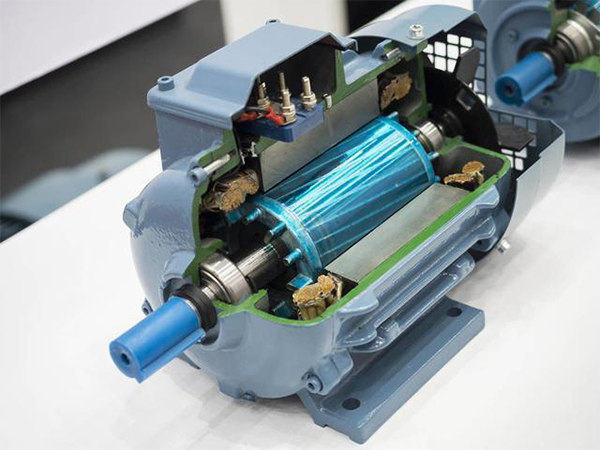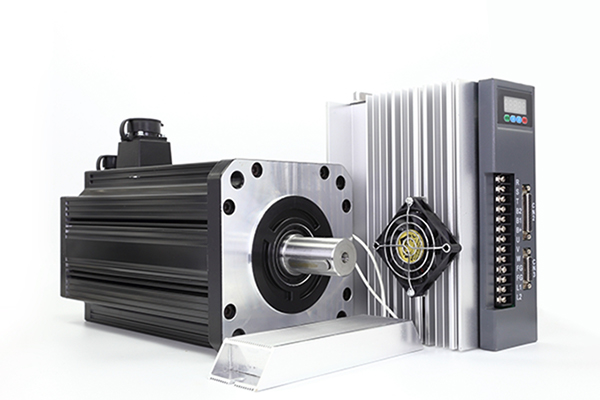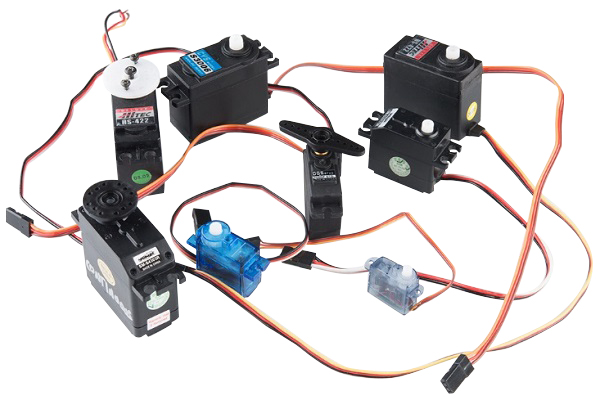What is the High and Low Inertia in Servo Motor?
Servo motors play a crucial role in various industrial applications, offering precise control over motion and positioning. One essential concept in the realm of servo motors is inertia, a parameter that significantly influences their performance.
A servomotor is an engine that controls the operation of mechanical components in a servo system. The servo motor rotor speed is controlled by the input signal and can react quickly. It is used as an actuating element in an automatic control system and has the characteristics of small electromechanical time constant, high linearity, starting voltage, etc. It can convert the received electrical signal into an angular displacement or angular speed output on the motor shaft.
In this article, we will delve into the distinctions between high and low inertia in servo motors, exploring their implications on system dynamics and overall efficiency.


Generally speaking, low inertia servo motors have good braking performance, quick startup, acceleration and stopping response, and good high-speed reciprocation, and are suitable for light load and high-speed positioning applications, such as linear and high-speed positioning mechanisms. Medium and high inertia motors are suitable for large loads and high requirements for smoothness, such as circular motion mechanisms and machine tools.
If the load or acceleration characteristics are large and you choose a motor with a low inertia, you may damage the motor shaft too much. The choice should be based on the size of the load, the acceleration and other factors, and there are energy calculation formulas for this in the sizing manuals.
The servo motor driver controls the response of the servo motor. The optimum value is the ratio of the load inertia to the motor rotor inertia, which should not exceed five times at most. The load can be made possible by the design of the mechanical drive.
The ratio of the load inertia to the motor rotor inertia is close to one or less. When the load inertia is really large and it is not possible to mechanically design the motor so that the ratio of the load inertia to the motor rotor inertia is less than five times, then a motor with a high motor rotor inertia, known as a high inertia motor, can be used. To achieve a certain response with a high inertia motor, the driver capacity should be larger.
A servomotor is an engine that controls the operation of mechanical components in a servo system. The servo motor rotor speed is controlled by the input signal and can react quickly. It is used as an actuating element in an automatic control system and has the characteristics of small electromechanical time constant, high linearity, starting voltage, etc. It can convert the received electrical signal into an angular displacement or angular speed output on the motor shaft.
In this article, we will delve into the distinctions between high and low inertia in servo motors, exploring their implications on system dynamics and overall efficiency.

- Inertia. Inertia is the measure of the inertia of a rigid body rotating around an axis, and rotational inertia is a physical quantity that characterizes the magnitude of the rotational inertia of a rigid body. It is related to the mass of the rigid body and the distribution of mass with respect to the axis of rotation. (A rigid body is an object in an ideal state that does not change in any way.) The motor inertia is also an important indicator of the servomotor when choosing a servomotor. It refers to the inertia of the servo motor rotor itself, which is quite important for the acceleration and deceleration of the motor. If the inertia is not well matched, the motor's movement will be very unsteady.
- Low Inertia. Low inertia means that the motor is flat and long, and the spindle inertia is small, so when the motor is used for high frequency repetitive motions, the inertia is small, and the heat generated is small. Therefore, low inertia motors are suitable for high-frequency reciprocating motions. However, the general torque is relatively small.
- High Inertia. High-inertia servo motors are relatively large and have high torque, making them suitable for high-torque but not very fast reciprocating motions. They are suitable for high torque, but not very fast reciprocating motions. Since the driver has to create a large reverse drive voltage to stop this large inertia from moving at high speeds to a stop, it generates a lot of heat.

Generally speaking, low inertia servo motors have good braking performance, quick startup, acceleration and stopping response, and good high-speed reciprocation, and are suitable for light load and high-speed positioning applications, such as linear and high-speed positioning mechanisms. Medium and high inertia motors are suitable for large loads and high requirements for smoothness, such as circular motion mechanisms and machine tools.
If the load or acceleration characteristics are large and you choose a motor with a low inertia, you may damage the motor shaft too much. The choice should be based on the size of the load, the acceleration and other factors, and there are energy calculation formulas for this in the sizing manuals.
The servo motor driver controls the response of the servo motor. The optimum value is the ratio of the load inertia to the motor rotor inertia, which should not exceed five times at most. The load can be made possible by the design of the mechanical drive.
The ratio of the load inertia to the motor rotor inertia is close to one or less. When the load inertia is really large and it is not possible to mechanically design the motor so that the ratio of the load inertia to the motor rotor inertia is less than five times, then a motor with a high motor rotor inertia, known as a high inertia motor, can be used. To achieve a certain response with a high inertia motor, the driver capacity should be larger.
Post a Comment:
You may also like:

Category
Featured Articles
How to Test Servo Motor?
 Servo motors are devices that convert electrical signals into mechanical motion and are widely used in industrial automation, ...
Servo motors are devices that convert electrical signals into mechanical motion and are widely used in industrial automation, ...
 Servo motors are devices that convert electrical signals into mechanical motion and are widely used in industrial automation, ...
Servo motors are devices that convert electrical signals into mechanical motion and are widely used in industrial automation, ...How to Maintain Servo Motor?
 Servo motors play a crucial role in various industries, serving as precision control devices in applications ranging from ...
Servo motors play a crucial role in various industries, serving as precision control devices in applications ranging from ...
 Servo motors play a crucial role in various industries, serving as precision control devices in applications ranging from ...
Servo motors play a crucial role in various industries, serving as precision control devices in applications ranging from ...What are the Types of Servo Motor?
 There are some special types of application of electrical motor where rotation of the motor is required for just a certain angle ...
There are some special types of application of electrical motor where rotation of the motor is required for just a certain angle ...
 There are some special types of application of electrical motor where rotation of the motor is required for just a certain angle ...
There are some special types of application of electrical motor where rotation of the motor is required for just a certain angle ...How to Select the Suitable Power ...
 It's important to consider the unique demands of a motion control application when selecting a power supply. During ...
It's important to consider the unique demands of a motion control application when selecting a power supply. During ...
 It's important to consider the unique demands of a motion control application when selecting a power supply. During ...
It's important to consider the unique demands of a motion control application when selecting a power supply. During ...What is a Servo Motor?
 There are some special types of application of electrical motor where rotation of the motor is required for just a certain angle ...
There are some special types of application of electrical motor where rotation of the motor is required for just a certain angle ...
 There are some special types of application of electrical motor where rotation of the motor is required for just a certain angle ...
There are some special types of application of electrical motor where rotation of the motor is required for just a certain angle ...